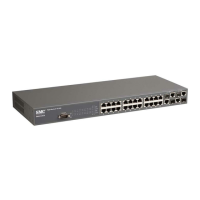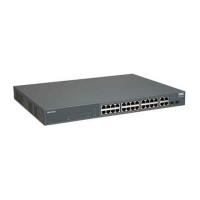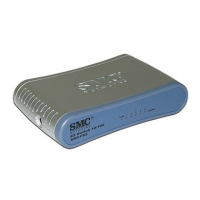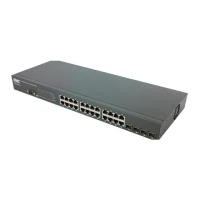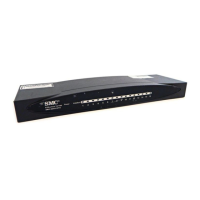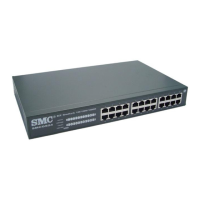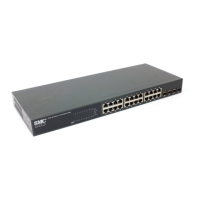SNMP
-
SERVER
HOST
21-7
community command prior to using the snmp-server host
command. (Maximum length: 32 characters)
• version - Specifies whether to send notifications as SNMP Version
1, 2c or 3 traps. (Range: 1, 2c, 3; Default: 1)
- auth | noauth | priv - This group uses SNMPv3 with
authentication, no authentication, or with authentication and
privacy. See “Simple Network Management Protocol” on page
5-63 for further information about these authentication and
encryption options.
• port - Host UDP port to use. (Range: 1-65535; Default: 162)
Default Setting
• Host Address: None
• Notification Type: Traps
• SNMP Version: 1
•UDP Port: 162
Command Mode
Global Configuration
Command Usage
•If you do not enter an snmp-server host command, no notifications
are sent. In order to configure the switch to send SNMP notifications,
you must enter at least one snmp-server host command. In order to
enable multiple hosts, you must issue a separate snmp-server host
command for each host.
•The snmp-server host command is used in conjunction with the
snmp-server enable traps command. Use the snmp-server enable
traps command to enable the sending of traps or informs and to
specify which SNMP notifications are sent globally. For a host to
receive notifications, at least one snmp-server enable traps
command and the snmp-server host command for that host must be
enabled.
• Some notification types cannot be controlled with the snmp-server
enable traps command. For example, some notification types are
always enabled.
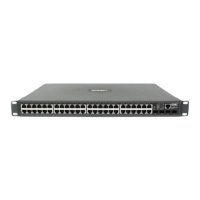
